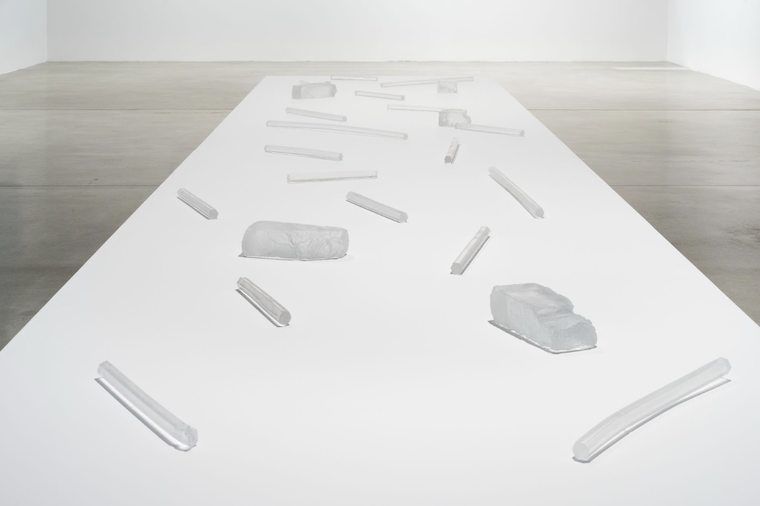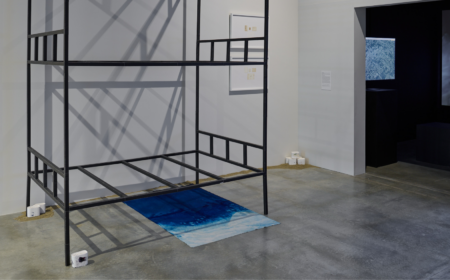University of California, Santa Cruz NEWSCENTER
April 10, 2024
San José, California (March 20, 2024) — The Institute of the Arts and Sciences at UC Santa Cruz (IAS) and San José Museum of Art (SJMA) are pleased to present Seeing through Stone, a multi-sited exhibition bringing together works by international artists whose works engage a history of struggle against prisons and their harms. This will be the largest exhibition to date of Visualizing Abolition—an ongoing scholarship initiative exploring art, prisons, and justice organized by the IAS.
Seeing through Stone will present 85 artists and collectives as well as 16 new commissions at 3 venues, the IAS (opening on April 12), Santa Cruz Barrios Unidos (opening on April 19), and SJMA in San José (opening on April 26). Seeing through Stone will be on view at all three venues through January 5, 2025.
“There have been notable recent exhibitions showing the harms caused by incarceration. Seeing through Stone continues this work by focusing on how artistic practice can model alternatives to systems based on punishment. Artists can show us different ways of seeing and moving through the world, helping imagine new societal structures, not based on punishment but on care,” stated Lauren Schell Dickens, chief curator at SJMA.
Seeing through Stone is titled after Etheridge Knight’s writing in Poems in Prison, composed while the poet was incarcerated in Indiana State Prison. The artists and collaborators featured in the exhibition, including currently and formerly incarcerated artists alongside those without lived experience, are those who see a world otherwise.
“In the past, it was rarely considered that artists would have something to say about the prison system,” noted Gina Dent, professor of Feminist Studies, History of Consciousness, and Legal Studies at UC Santa Cruz. “Historically, only criminologists, sociologists, and legal professionals were permitted to contribute to the discourse. But holistically, we really need people from every discipline and walk of life to be a part of the thinking about how to enact social change.”
Past exhibitions and programs for Visualizing Abolition primarily focused on prisons and abolition on the national level, with Seeing through Stone widening the scope to point at carceral conditions internationally. The 16 newly commissioned projects and other works emerge from different sociopolitical contexts around the globe, from Brazil, to the Philippines, Guantanamo, Bangladesh, the US, and elsewhere. With video, painting, sculpture, installation, sound, and performance, the exhibition charts what scholars and activists call an expanding “constellation of abolition”—the ongoing organizing, activism, dreaming, and worldmaking taking place across the globe.
“According to a 2023 study by Penal Reform International, over 11.5 million people are estimated to be imprisoned worldwide,” stated Rachel Nelson, director and chief curator of IAS. “Artists both inside and outside of prisons throughout the world recognize that cultural shifts are necessary to change this global dynamic.
SJMA began collaborating with IAS on exhibitions for Visualizing Abolition in 2020 with the co-presented exhibition Barring Freedom, which tackled complex themes of policing, detention, and imprisonment that make up the prison industrial complex in the United States. Subsequent new commissions and solo exhibitions for Visualizing Abolition at SJMA also addressed issues in the American carceral landscape and history including Sky Hopinka: Seeing and Seen in 2022; Sadie Barnette: Family Business, and Forensic Architecture’s project If toxic air is a monument to slavery, how do we take it down? in January 2024.
“UC Santa Cruz has a long history of research, teaching, and activism in public service and social justice. We are proud to partner with them to engage students and the public with new ways of thinking and collaborative problem-solving to improve the quality of life for everyone, from our regional community to the entire world.” said S. Sayre Batton, Oshman Executive Director at SJMA.
In conjunction with the exhibition, SJMA and IAS plan to co-host a series of public programs and events that further explore the interdisciplinary ties between art and prison abolition. Seeing through Stone will also be accompanied by a catalog to be released in late 2024.
Read the full article here.
Image: Maria Gaspar, Invisible Things Are Not Necessarily Not-There (after T.M.), 2023. Twenty-three glass casts, dimensions variable. Courtesy of the artist. Photo by Phillip Maisel.




